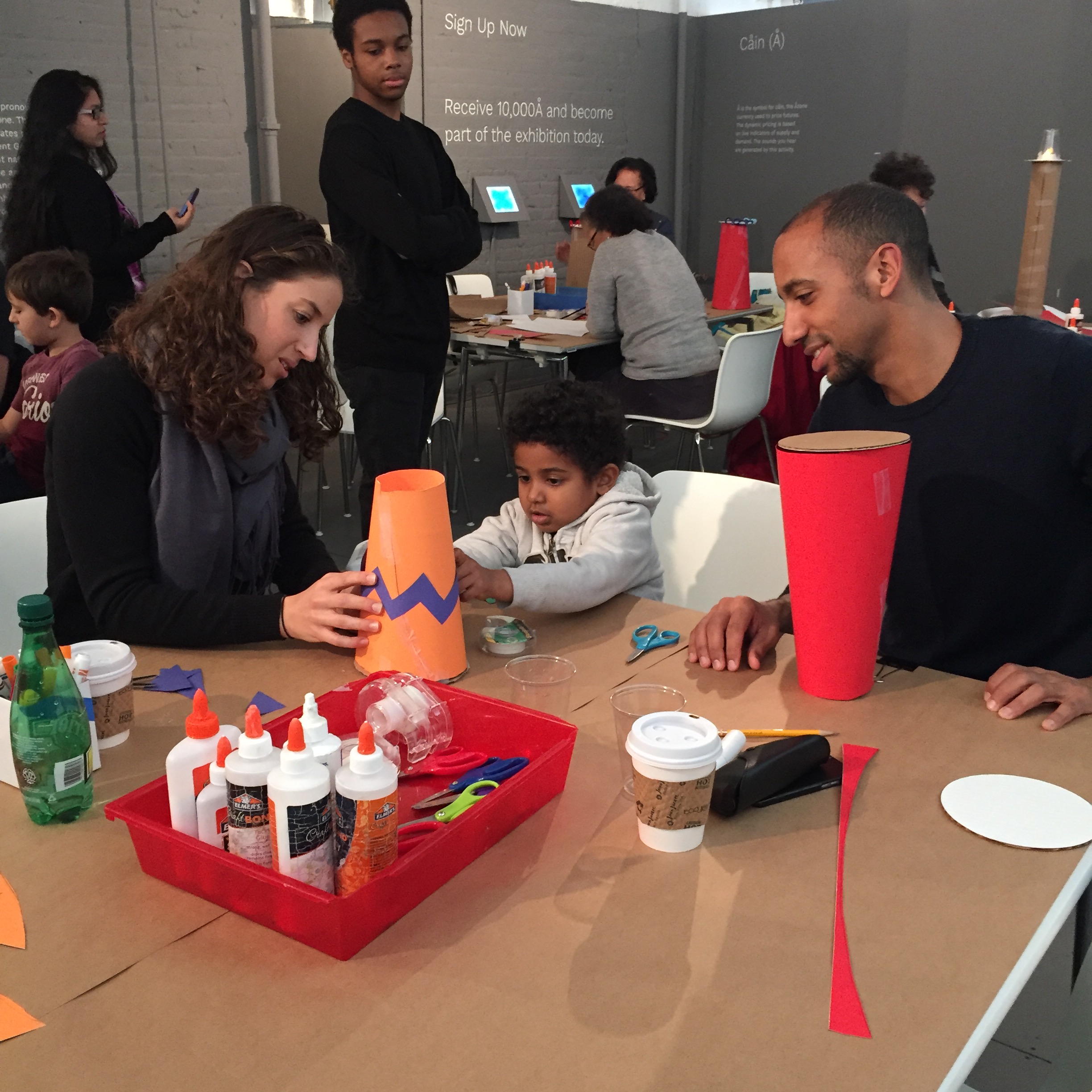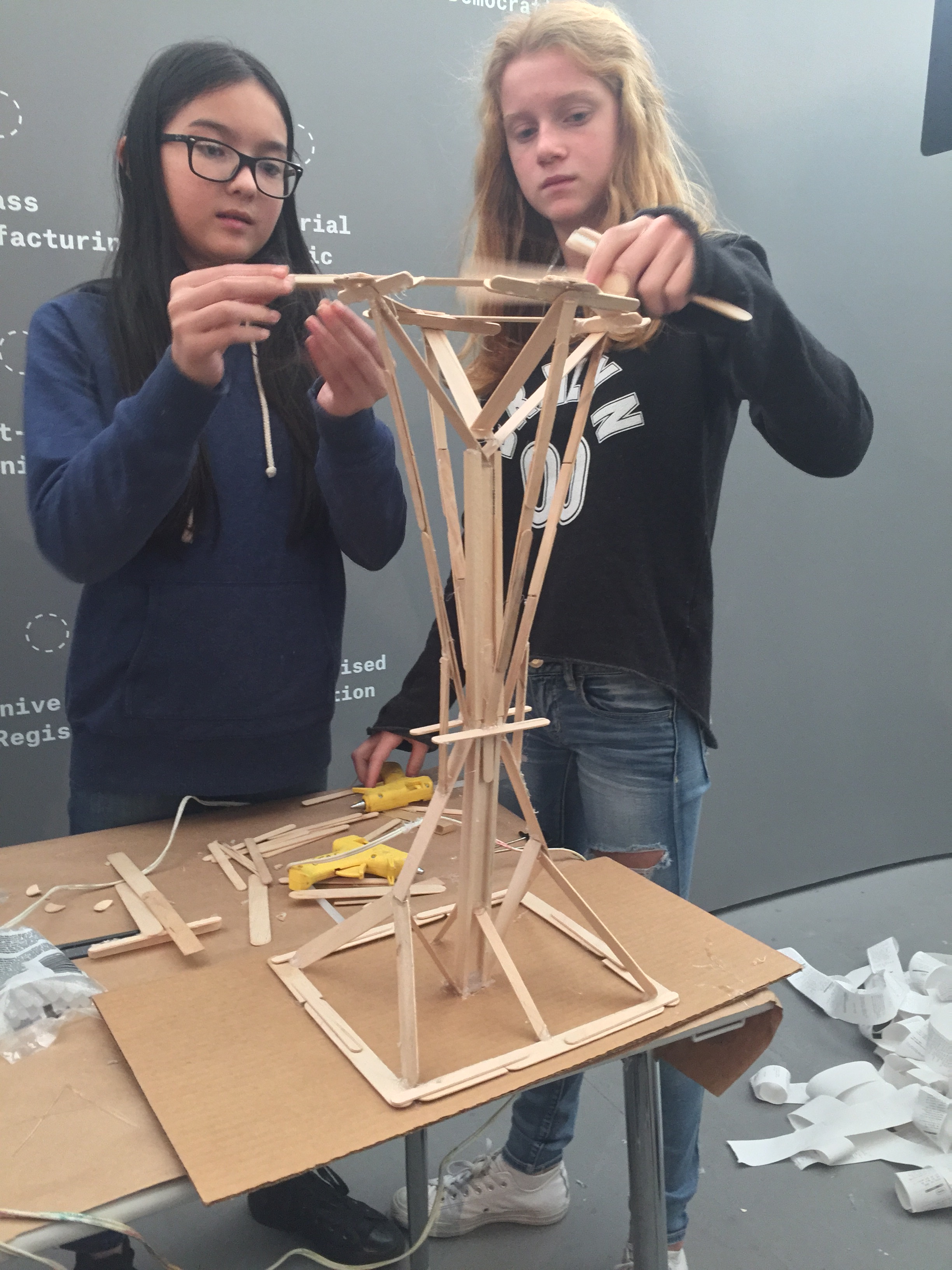by Tim Hayduk
With the support of the Howard Hughes Corporation, the Center for Architecture participated in the Seaport Culture District this fall, setting up a gallery and event space at 181 Front Street. The location was originally conceived as a series of counting houses by Peter Schermerhorn and George Codwise in 1811, buildings which would later become New York City’s first World Trade Center. Over 200 years, these robust load-bearing brick and timber buildings defined adaptive reuse long before the neighborhood was landmarked and became a festival marketplace. The purpose-built buildings became dormitories and hotels for sailors, restaurants serving the Fulton fishmongers, and are now home to the South Street Seaport Museum and several retailers. The Center for Architecture lucked out in being able to add to the their history by providing space for two exhibitions, lectures, events, and educational programs in these flexible spaces built for commerce.
The Seaport itself conjures up old-time feelings of New York’s past, and offers a rich context for our audiences to look deeper at the 19th-century building fabric. Our monthly Family Days focused on bridges and lighthouses. Just a few blocks south, the Brooklyn Bridge, perhaps America’s greatest engineering feat, beckons visitors to the waterfront. The Titanic Memorial Lighthouse and Ambrose Light Ship are two examples of lighthouse design and purpose, one symbolic and the other essential to marking the entrance of New York Harbor’s Ambrose channel. Real examples from the built environment and history abound, making learning here immediate and tangible.
The Center for Architecture’s StudentDay@theCenter workshops for K-12 classes also benefitted from the new location and context. What a joy to teach students about the structural basis of skyscrapers when there are many right outside of our 181 Front Street address and evident in the cranes constructing new buildings on the waterfront. Our Language of Architecture Student Day gave students the opportunity to “read” the façades of many historic buildings to understand how construction and building materials have changed over the centuries. Having space to conduct hands-on workshops allowed us to bring our young audiences through the design process. We started by building a foundation of knowledge through experiencing architecture, and provided tools for young designers to realize their ideas in models. Our programs connected students to their environment by fostering pride-of-place. The Seaport is indeed an important place in New York’s history, and we encourage you to walk the streets built on landfill and read the story told in crooked lintels, fading painted signs, and other details that bring history to life.
The Center for Architecture at the Seaport will be open through 12.31.15.

